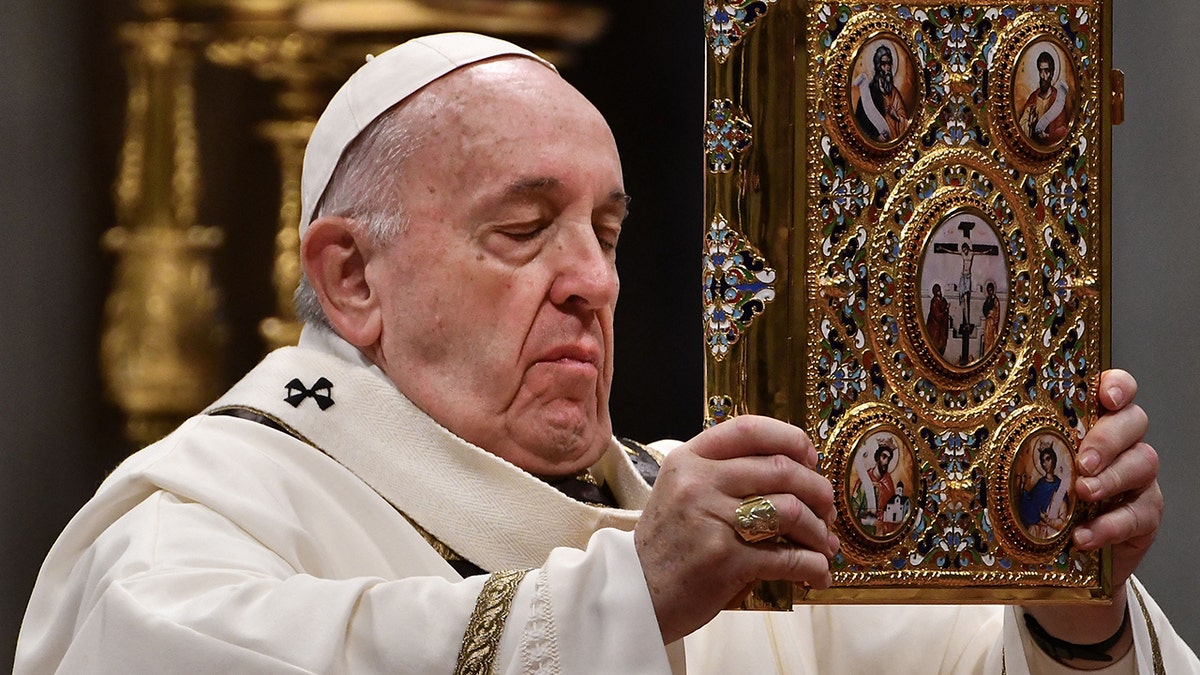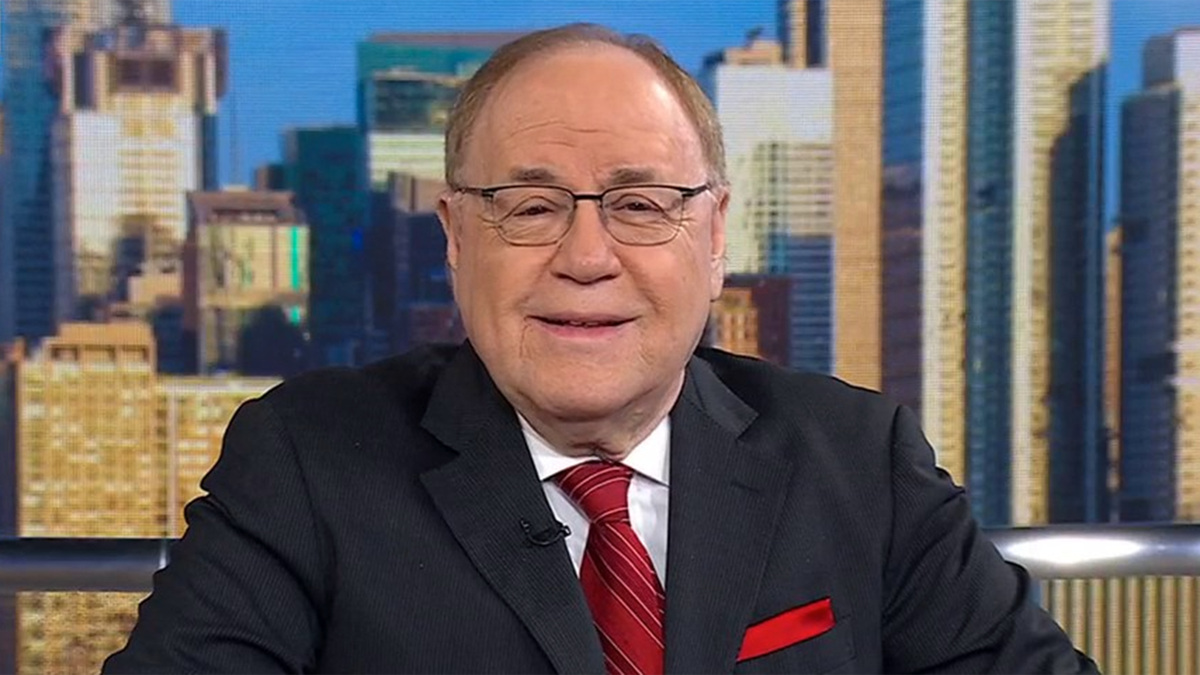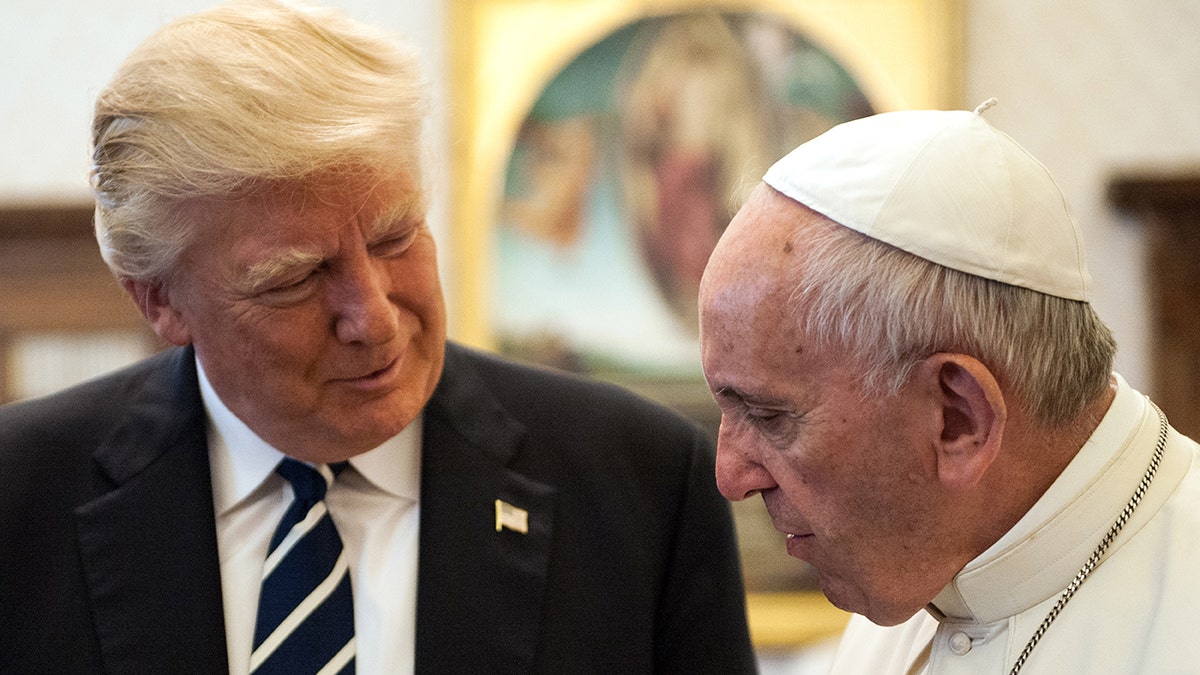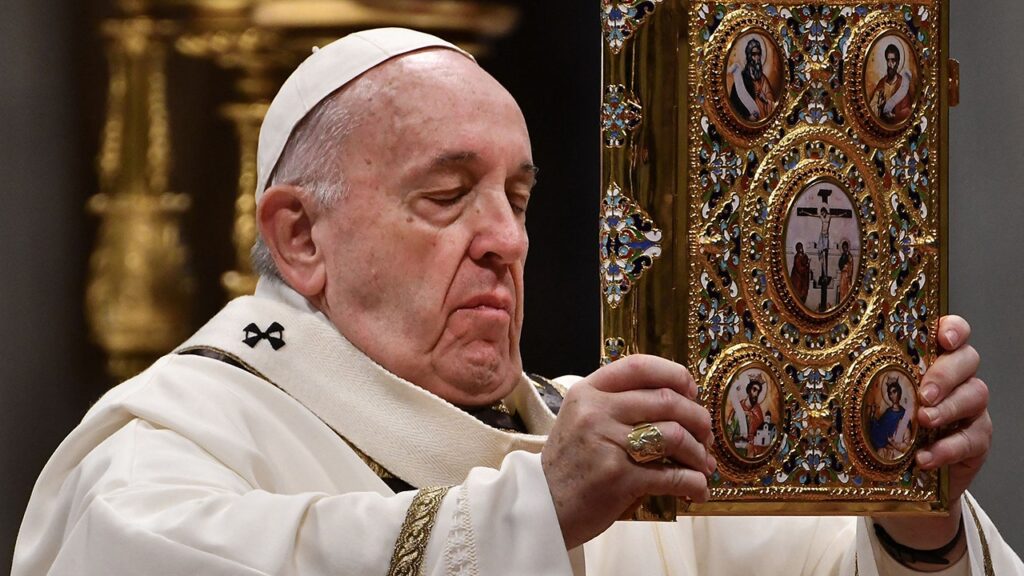Is Pope Francis going to live? Is he going to die? Will he remain as pope?
How much can be learned from the daily or twice-daily Vatican announcements and from media reports?
Below are my current answers, based on my interpretation of the available information (which is, of course, subject to change).
POPE FRANCIS’ MEDICAL CONDITION: WHAT TO KNOW ABOUT BILATERAL PNEUMONIA
The pope has a long history of medical problems, including respiratory infections. Back in 1957, he had a piece of one lung removed.
(Despite this, Pope Francis is not a smoker, and in fact ordered a ban on the sale of cigarettes in the Vatican’s duty-free shop beginning in 2018.)

Pope Francis holds the Holy Book of Prayers as he celebrates the Epiphany mass on January 6, 2020, at St. Peter’s Basilica in the Vatican. (Vincenzo Pinto/AFP via Getty Images)
The Catholic leader was last hospitalized for pneumonia in 2023. He previously underwent abdominal surgery, when part of his colon was removed.
Most recently, the pope was hospitalized for a respiratory infection on Feb. 14, 2025, at Gemelli Hospital, one of the best hospitals in Italy.
What is the pope’s medical condition?
The pope’s condition has been described as bilateral pneumonia, which generally appears as consolidation on a chest x-ray or CT scan.
He is presumably being treated with broad-spectrum antibiotics and is reportedly non-septic.
LUNG CANCER RISING AMONG NON-SMOKERS — HERE’S WHY
Though pneumonia is the most common cause of bacterial sepsis in the elderly, the statistic that one out of three cases leads to sepsis is misleading, because it refers to the period before the antibiotic era.
Given that the pope has likely been given antibiotics for several days and appears to be stable, the chances of him developing sepsis are greatly reduced.
What is sepsis?
Sepsis is a life-threatening condition of hemodynamic compromise (where the body is not getting enough blood flow to function properly), which causes a drop in blood pressure.
The condition generally causes a high fever, and heart and kidney output may decrease.
“Although the pope’s prognosis is currently unknown, it doesn’t sound like he is truly in critical condition.”
Often, a septic patient needs special drugs (pressors) to maintain blood pressure, and toxins and acid (lactate) can build up in the blood.
Blood cultures can turn positive with a pathogen, which in this case would presumably be a bacteria.
Why is the pope on oxygen?
The pope is receiving what is known as high-flow oxygen by nasal cannula (a device that provides extra oxygen through a tube and into the nose), which can vary in oxygen percentage.
This is a treatment for respiratory decompensation (breathing difficulties), but is not as aggressive as CPAP (continuous positive airway pressure) or mechanical ventilation.

“The fact that the pope is not currently on a ventilator is a good sign that he is not decompensating or septic and that his chances of recovery are possible or even probable,” writes Dr. Marc Siegel. (Fox News)
The fact that the pope is not currently on a ventilator is a good sign that he is not decompensating or septic and that his chances of recovery are possible or even probable.
It is not yet clear why he needed blood transfusions (although they do improve oxygen-carrying ability) or why his platelet count was reportedly low.
Reports of complications
Over the weekend, on Saturday, the pope reportedly experienced an asthmatic episode, which was presumably treated with oxygen and with bronchodilators to open his airways (which constrict during an airway attack).
CLICK HERE TO SIGN UP FOR OUR HEALTH NEWSLETTER
An existing asthmatic condition can be exacerbated by pneumonia. In the pope’s case, it appears to have responded well to treatment.
The media has also been ablaze with references to “kidney failure,” leading people to put that together with double pneumonia and instantly believe the pope is through.

Pope Francis meets President Donald Trump in the Private Library of the Apostolic Palace at Vatican City on May 24, 2017. (Vatican/Pool/Galazka/Archivio Grzegorz Galazka/Mondadori via Getty Images)
While Pope Francis is certainly far from out of the woods, per Vatican reports, it is important to clarify that mild renal insufficiency simply means blood flow to the kidney is mildly reduced, perhaps from low volume or dehydration, and it might well be improving from the blood transfusions he is receiving.
As long as his urine output keeps up and his kidney function doesn’t worsen, this should not be a major obstacle.
What is the pope’s prognosis?
Although the pope’s prognosis is currently unknown, it doesn’t sound like he is truly in critical condition, a term doctors tend to reserve for much more unstable patients.
CLICK HERE TO GET THE FOX NEWS APP
It is hopeful to read in the local Italian press (translated to me) that the pope is once again up and reading newspapers and had a successful night.
For more Health articles, visit www.foxnews.com/health
He is reportedly considering possible successors, but hopefully he will be alive to choose them.
Don’t underestimate the impact of great medical care combined with the power of prayer.







